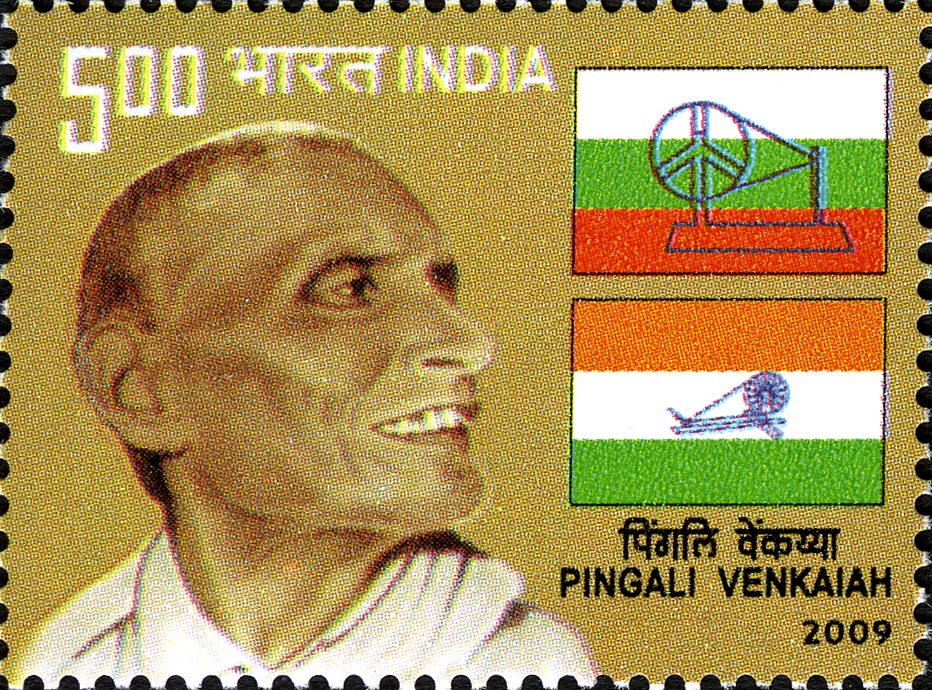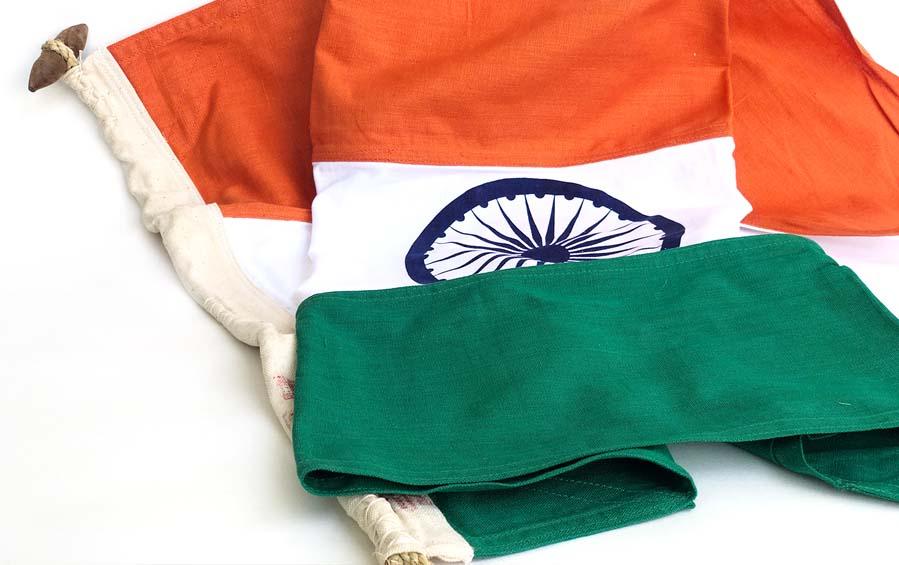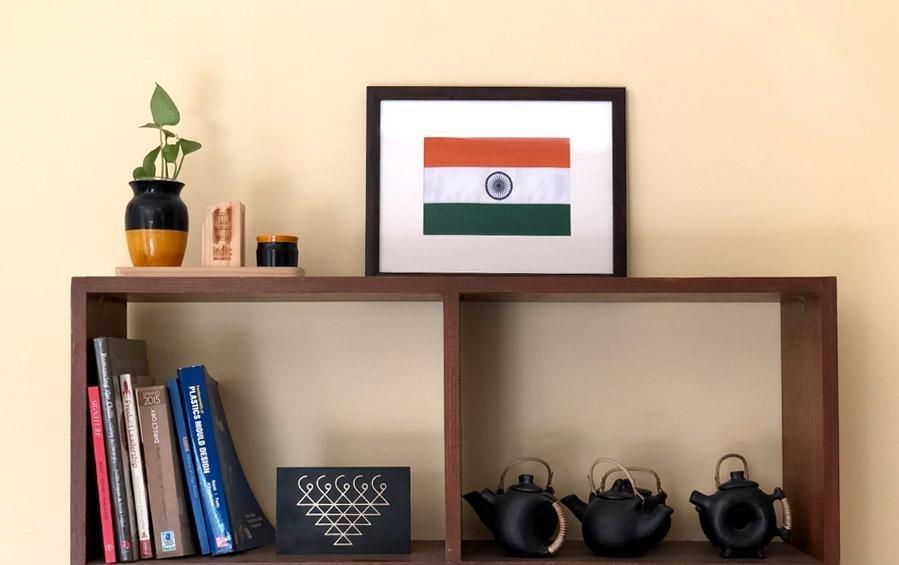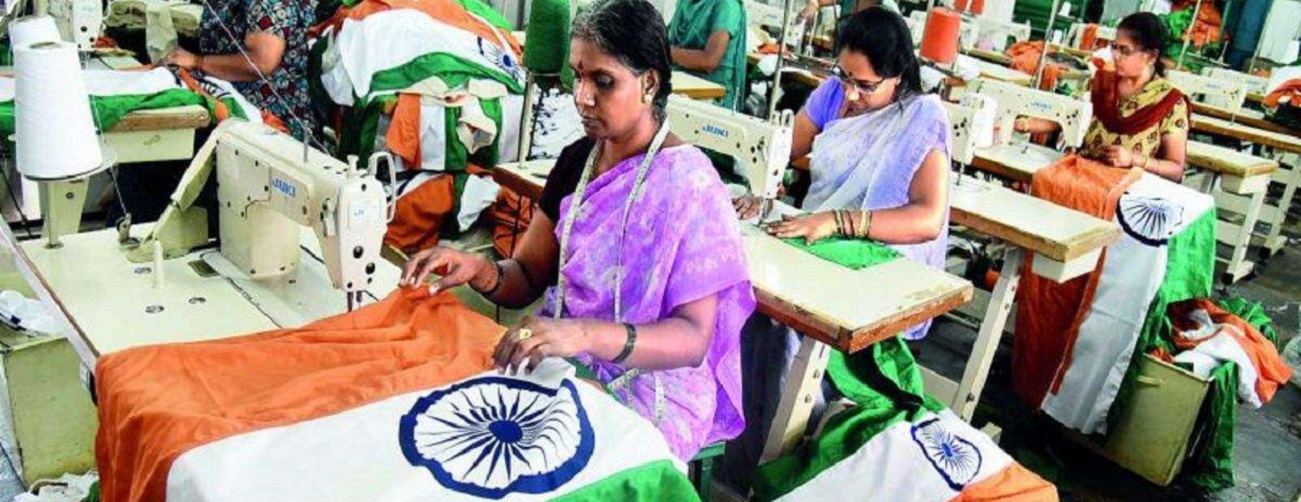Photo: Production of national flags at Karnataka Khadi Gramodyoga Samyukta Sangh – KKGSS. Credit: Bennett Coleman and Co. Ltd. (Times Group)
A salute of 21 guns and the unfurling of the Indian National Flag by Dr. Rajendra Prasad heralded the historic birth of the Indian Republic on January 26, 1950. In India, the term “tricolour” or “Tiranga” refers to the Indian National Flag. The Indian National Flag represents the hopes and aspirations of the people of India. Tiranga is the symbol of our national pride.
History of Tricolour
An Indian flag was reportedly designed by Sister Nivedita, an Irish disciple of Swami Vivekananda between 1904-1906. On August 7, 1906, the national flag first time was hoisted in Parsee Bagan in Kolkata.

The final and current tricolour came about in 1947. The flag is based on the Swaraj flag designed by Shri Pingali Venkaya – a young freedom fighter. Venkaya met the Mahatma once again in Vijayawada and showed him his publication with the various designs of the flag. Acknowledging the need for a national flag, Gandhi then asked Venkayya to design a fresh one at the national congress meeting in 1921. Gandhi asked Venkayya to include a charkha or spinning wheel at the centre of the flag. He also expressed his wish that the national flag should have three colours – red to represent Hindus, green for Muslims and white for other faiths.
Several changes continued to be made till 1931 that emerged as a landmark in the history of our tricolour. It was important that the flag depicted the ethos of the nation and did not have any religious forbearance. The flag was officially adopted by the Indian National Congress in 1931.
However, another revision took place on July 22, 1947 when the Constituent Assembly adopted the Tiranga with Ashok’s chakra in the centre as Free India National Flag.
Photo: Shri Pingali Commemorative postage stamp depicting two of his significant flag designs. Credit: Wikipedia
Significance of Tricolour
Saffron on top symbolises “strength and courage”, white in the middle represents “peace and truth” and green at the bottom stands for “fertility, growth and auspiciousness of the land”.
The Ashok Chakra with 24 spokes replaced the spinning wheel as the emblem on the flag. It is intended “to show that there is life in movement and death in stagnation”.
Production of Tricolour
By law, the National Flag Of India should be made of handspun and handwoven wood/cotton/silk Khadi bunting and the manufacturing process and specifications should meet the Bureau of Indian Standards (BIS) requirements.
National Flag has been reserved for the Khadi Sector for supply to various Govt. agencies, Ministry of Defence, Para Military Forces, etc for official use. This flag is made by the KKGSS based in Hubli, Karnataka. It is not an easy task, because, any defect in the Flags such as colour, size, thread count, strength of yarn, fastness of the colours used for dyeing etc., will be considered as a serious offence and is liable for a fine or imprisonment or both, as per the provisions of Flag Code of India 2002.
Check out National Flag Making Video by Karnataka Khadi Gramodyog Samyukta Sangh (Federation).
Hoisting Tricolour
Until 2002, citizens of India were not allowed to hoist the Indian flag at their homes, apartments, schools etc. However, on 26th January 2002, the Indian flag code was modified allowing the citizens to hoist the tricolour anywhere and at any time, provided they strictly followed the rules and regulations on how to fly the flag.
If you are looking for good quality, authentic, and unique Indian Khadi Flags check out our unique INDIA | The Republic Collection here.

Tirange – Desktop Frame 
Tiragna – Outdoor Flag 
Tiranga – Wall Frame
Source:
1. Pingali Venkayya, Azadi Ka Amrit Mahotsav, Government of India. Retrieved from https://amritmahotsav.nic.in/unsung-heroes-detail.htm?280
2. Happy Independence Day 2020: Real history of Indian flag and significance of its tricolour, By Zarafshan Shiraz, Dated 15 August, 2020, Hindusthan Times, Retrieved from https://timesofindia.indiatimes.com/readersblog/bloggify/history-behind-the-indus-valley-civilization-34399/
2. Explained: How did India get its national flag? By Vandana Kalra, Dated 16 August, 2020, The Indian Express, Retrieved from https://indianexpress.com/article/explained/explained-how-india-got-its-national-flag-6553812/


